Butterfly Swimming Technique: A Step-By-Step Guide
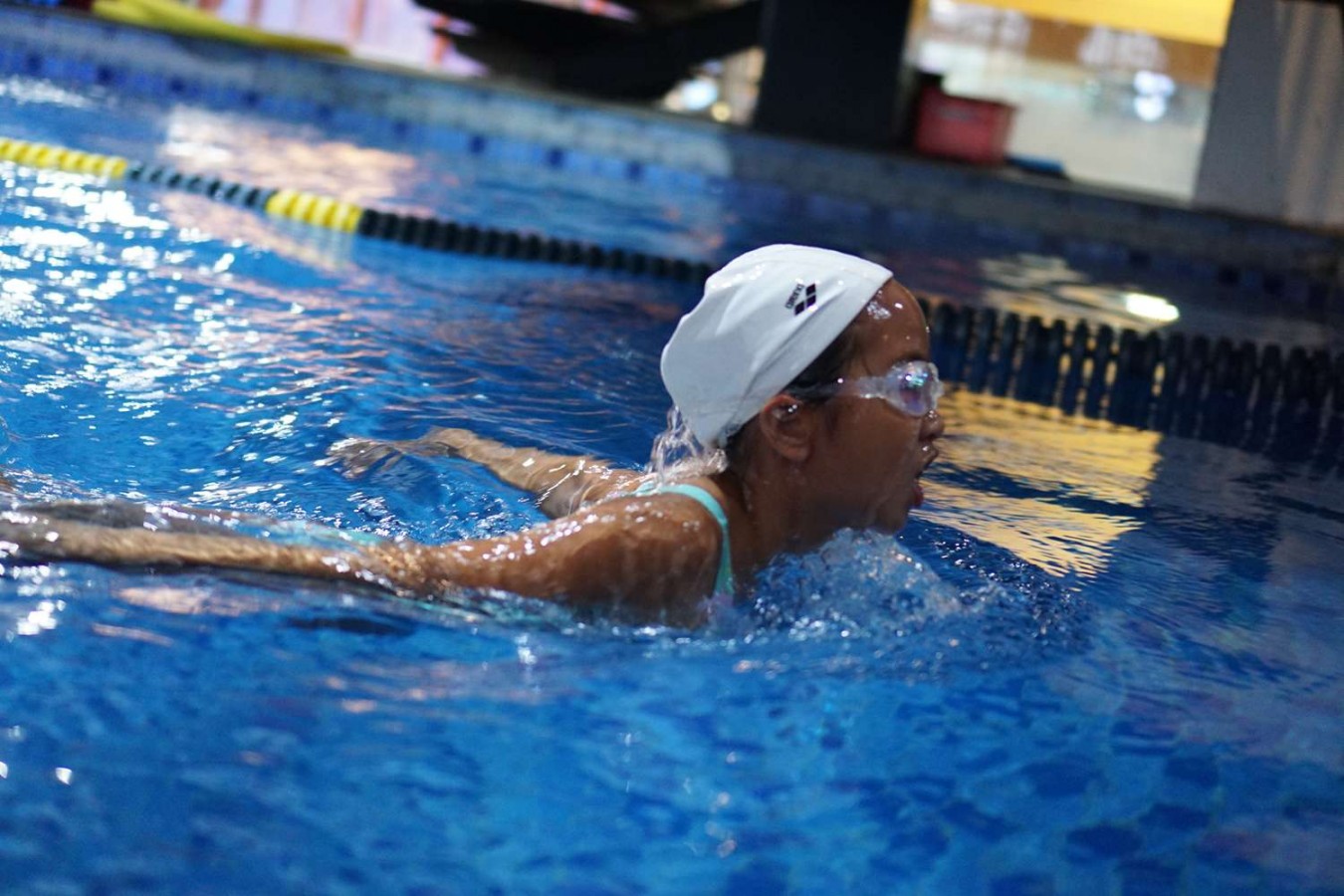
Butterfly swimming is a mesmerizing stroke known for its grace and power in the water. While it may seem daunting at first glance, mastering the butterfly technique is achievable with dedication and practice.
In this article, we'll delve into what the butterfly swim technique entails, provide a step-by-step breakdown on how to execute it effectively, and offer tips on how to improve your butterfly skills.
Understanding the Butterfly Swimming Technique
The butterfly stroke is characterized by a simultaneous movement of both arms, resembling the flapping of wings, coupled with an undulating dolphin kick. It requires considerable upper body strength, core stability, and coordination to execute efficiently.
The butterfly is often considered one of the most demanding strokes in competitive swimming, but it's fluid motion and rhythmic flow make it a favorite among enthusiasts.
A. Butterfly Stroke in Short-Distance Races (50m and 100m)
In 50m butterfly races, swimmers focus on explosive power and speed. With only one length of the pool, the race is fast and intense, leaving little room for mistakes. Strong starts, quick turns (in short-course pools), and powerful underwater dolphin kicks are essential.
The 100m butterfly adds an endurance challenge. Swimmers must balance speed with control, maintaining strong technique while managing fatigue. Proper rhythm and breathing become critical to avoid losing efficiency in the second half of the race.
B. Butterfly Stroke in Long-Distance Races (200m)
The 200m butterfly is widely known as one of the most physically demanding swimming events. It requires exceptional stamina, mental toughness, and technical efficiency. Swimmers must maintain a steady rhythm, conserve energy, and stay mentally focused to keep their technique strong from start to finish. Smooth timing—similar to breaststroke—is especially important in this event to prevent early exhaustion.
C. Butterfly Stroke in Medley and Relay Competitions
The butterfly stroke plays a key role in individual medley (IM) and medley relay events, where it is always swum first. This opening leg sets the pace for the entire race, making a strong butterfly performance crucial for gaining an early advantage.
In relay competitions, butterfly swimmers must combine speed with precision, especially during takeovers. A fast, controlled butterfly leg can give the team momentum and confidence heading into the next strokes. This makes butterfly not just a test of physical strength, but also of teamwork and race strategy.
Step-By-Step Butterfly Swimming Technique Guidance
Credit belongs to Global Triathlon Network
Here's a helpful guide on how to practice butterfly swimming technique:
A. Body Position
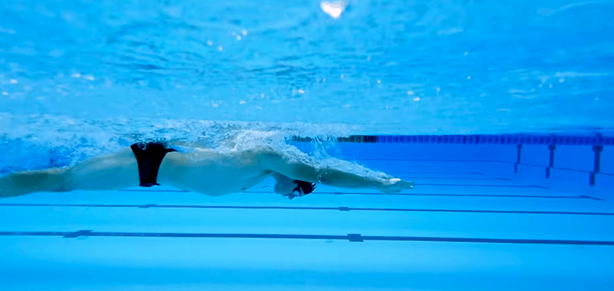
To glide smoothly through the water, lead with the crown of your head, keeping your shoulders and hips aligned horizontally. Try to stay as close to the water’s surface as possible to maintain speed and efficiency.
B. Mastering Arm Movements
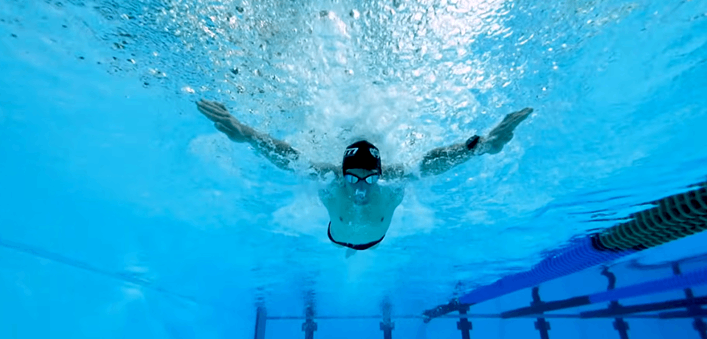
Butterfly arm action has three key sweeping motions that work together for a powerful stroke:
- Extend your arms forward over the water and enter with your thumbs first, about shoulder-width apart. Keep your elbows slightly higher than your hands.
- Move your hands outward into a Y-shape, then sweep them back in towards each other while keeping elbows high.
- Push your hands back alongside your body, then aggressively swing your arms forward for the next stroke. Keep your arms out of the water, but avoid letting your hips drop—stay as streamlined as possible!
C. Kicking Like a Pro
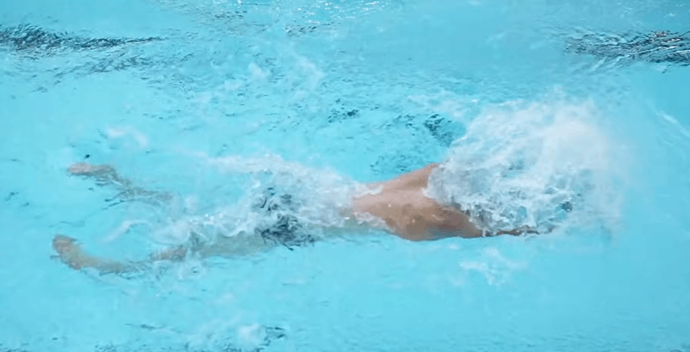
Your dolphin kick starts from the hips, with your knees slightly bent and feet breaking the water’s surface.
- Use powerful downbeats to push your body forward.
- Keep your legs together and ankles relaxed.
- Aim for two kicks per arm cycle—one when your arms enter and sweep out, and another to help lift your arms out of the water for recovery.
D. Breathing Techniques
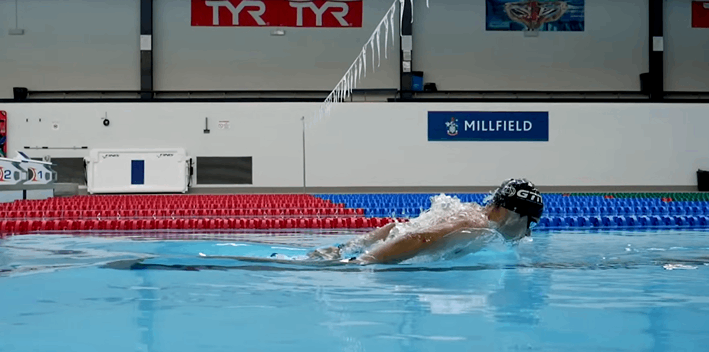
Most swimmers breathe straight ahead, similar to breaststroke.
- Use your shoulders to lift your head naturally with your body’s undulation.
- Keep your chin in front of your forehead and inhale quickly through your mouth.
- Lower your head before your arms re-enter the water, and exhale underwater through your nose and mouth.
Some competitive swimmers prefer side breathing, where they turn their head instead of lifting it. This can help keep the body lower in the water, but some find the neck twist uncomfortable.
E. Executing a Smooth Turn
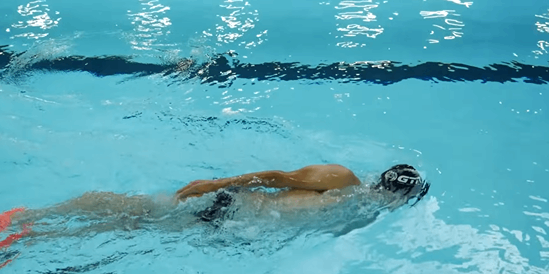
As you reach the wall:
- Touch with both hands at the same time, just like in breaststroke.
- Immediately push one hand back as you rotate your body onto its side.
- Tuck your knees, plant your feet on the wall, and push off with power.
- Start an underwater dolphin kick as your momentum slows down.
- Your first arm pull should happen when your body is still slightly submerged but parallel to the surface.
Elements Need To Mastered for The Butterfly Stroke
Many individuals continue to face challenges when attempting the butterfly swim technique. However, fear not, as a step-by-step guide exists to aid in mastering this intricate stroke. Here are several elements you have to know in practicing butterfly swimming technique:
1. Body Positioning
Before initiating the stroke, it's crucial to establish the correct body position in the water. Lie face down with your body parallel to the surface, keeping it as streamlined as possible. Extend your arms forward, slightly wider than shoulder-width apart, with your palms facing downward. Ensure that your legs are together, and your feet are pointed to minimize drag.
2. The Pull
The pull phase of the butterfly stroke begins with the initiation of the arm movement. Start by pressing your chest down slightly while simultaneously bending your elbows and sweeping your arms outward.
As your hands enter the water, initiate a powerful circular motion, drawing them inward towards your hips. Focus on maintaining a high elbow position throughout the pull to maximize propulsion and minimize resistance.
3. Master The Dolphin Kick
Learn to master the dolphin kick, which refers to the undulating motion of the legs utilized in the butterfly stroke, resembling the kick of a dolphin or mermaid underwater. Ensure both legs move in unison and remain pressed together to maintain water pressure efficiently.
In the butterfly stroke, execute two kicks for each stroke of the arms. However, these kicks differ in intensity. The initial kick, known as the small kick, coincides with the formation of the keyhole shape with the arms.
As the arms generate forward momentum, the small kick requires less force. Conversely, the subsequent kick, termed the big kick, occurs during the recovery phase when the arms emerge from the water.
Given the loss of momentum during this phase, a stronger kick is necessary to propel the body forward. A common mistake among novices is maintaining a uniform kicking pattern without distinguishing between small and big kicks.
4. The Breath
Timing your breaths correctly is crucial in butterfly swimming. As your hands reach the peak of the pull beneath your body, lift your head slightly above the water to take a quick breath. It's essential to keep this movement minimal to avoid disrupting your body's streamline position. Exhale gradually as your face returns to the water to prepare for the next breath.
5. The Recovery
After completing the pull phase, begin the recovery by sweeping your arms out of the water in a circular motion. Keep your elbows high as you extend your arms forward above the water, aiming to create minimal resistance. Focus on maintaining a fluid and continuous motion to prepare for the next stroke.
6. The Kick
Simultaneous with the arm movement, execute a powerful dolphin kick to provide additional propulsion and momentum. Start by pressing your chest down slightly, engaging your core muscles, and initiating the kick from your hips.
Make a fluid whipping motion with your legs, keeping them together and your feet pointed. The kick should originate from the hips and emphasize a continuous undulating motion to complement the arm stroke.
7. Timing and Rhythm
Achieving optimal timing and rhythm between the arm stroke and the kick is essential for efficient butterfly swimming. Focus on synchronizing the movements of your arms and legs, ensuring that they work together harmoniously to propel you through the water. Practice maintaining a smooth and rhythmic motion, coordinating the pull, breath, recovery, and kick in a fluid sequence.
8. Practice Drills
Incorporate various drills into your training regimen to improve technique, build strength, and enhance endurance in butterfly swimming. These drills may include butterfly kick with a kickboard to focus on leg strength and propulsion, single-arm butterfly to isolate and refine arm technique, and butterfly with fins to increase speed and power.
Need Help To Improve Your Swimming Technique?
If you find that your children are drawn to the world of swimming, as parents, consider enrolling them in a swimming program at Rockstar Academy. Renowned for its excellence in sports and performing arts, Rockstar Academy offers a wide range of physical activity programs, including swimming.
Their curriculum, which includes participation in RockOlympics, provides an incredible learning experience for students to explore their true potential. Moreover, Rockstar Academy offers a free trial class for those interested, so don't hesitate to reach out and discover the exciting opportunities awaiting your children.
Contact Rockstar Academy today and start your children’s journey in the pool!
FAQ
Is butterfly swimming suitable for beginners?
While butterfly swimming can be challenging for beginners, with patience and consistent practice, it can be mastered over time. It's essential to focus on building foundational skills and gradually progressing to more advanced techniques.
How can I improve my butterfly kick?
Practice butterfly kick drills focusing on generating power from the hips and maintaining a fluid motion. Incorporate ankle flexibility exercises and experiment with different kick tempos to find what works best for you.
What should I do if I struggle with breathing during butterfly swimming?
Focus on timing your breaths with the arm stroke, taking quick and efficient breaths during the recovery phase. Practice breath control drills and gradually increase your lung capacity through cardiovascular exercises and interval training.
Can I use fins to improve my butterfly technique?
Yes, using fins can help improve propulsion, refine technique, and build leg strength. However, it's essential to use them in moderation and focus on maintaining proper form to avoid dependency on the fins.



